Last Updated on June 5, 2022 by
I huddled into my thin shawl as I got down from the bus at Saputara on a November early morning. I did not expect Saputara to be this cold and windy, I muttered to myself, as my hands dialled the number of the driver who was assigned to pick me up. “I will reach in 5 minutes”, he said as I tried to reach deep in my backpack to find another piece of cloth that could possibly warm me. He picked me up in some time and informed me that we would reach Baradpani in 20 minutes. The warmth inside the car calmed my nerves and I craned my neck to see the valley through the zig-zag roads. It was still pitch dark and I happily settled in the seat.
I had come to Baradpani to experience community-based tourism in Gujarat – a typical Indian village in the countryside, interact with the villagers, learn about their organic agriculture journey, and simply get awed with the simple pleasures they celebrate. I reached the sleepy village just at the break of dawn where my host – Mr. Bhaskar greeted me and welcomed me into his home. He asked me to rest after the bumpy ghat ride and I happily napped till my bladder woke me up!
I stretched myself and introduced myself to Bhaskarbhai’s home. Fresh air filled my nostrils and the only sound I could hear was the chirping of birds in the trees of his compound, the cackle of kids nearby, and the mooing of the cows. Such a stark difference from the traffic noise of the city. As I was soaking all this in I was called for breakfast.
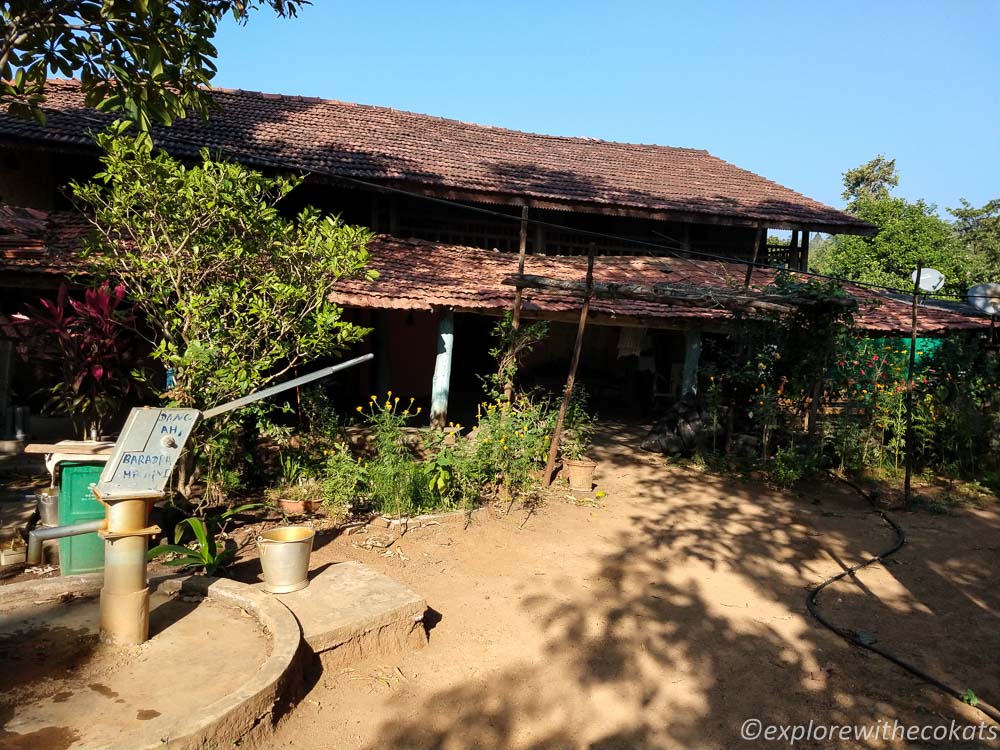
Post breakfast, Bhaskarbhai informed me how Grassroutes Journeys have worked in their village Baradpani. After three years of brainstorming and consultations and one field visit to Purushwadi, finally convinced 5 families to start community-based tourism a year back. A couple of training later they were ready to welcome tourists from within and outside India and have so far hosted over 250 guests in the one year since they are operational. Here’s a snippet from my 2 days of peaceful stay at Baradpani.
Homestay at Baradpani
A humble home with a big sit-out and a large compound is how the typical homes are in the village. There was one room in the house for guests. There were some student researchers during my stay and we shared the room like a dormitory. The entire house is made from mud, cow dung, and wood, making it pleasant to stay. Cow dung has a cooling effect in summers and a heating effect during winters which makes it bearable to stay in all seasons without air conditioning or ceiling fans. Most meals are cooked in the indoor kitchen on a chulha (traditional firewood kiln)
I was provided with hot water for bathing which was a small enclosed place in the house. The toilet was a bit farther from the house as traditionally they are not supposed to be inside the house.
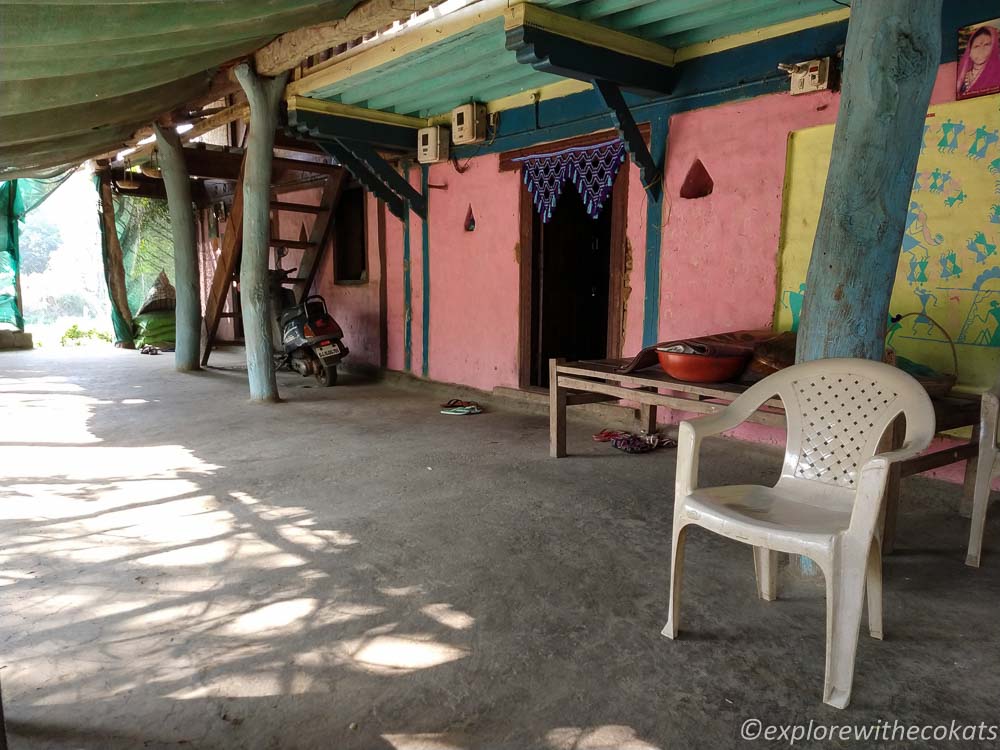
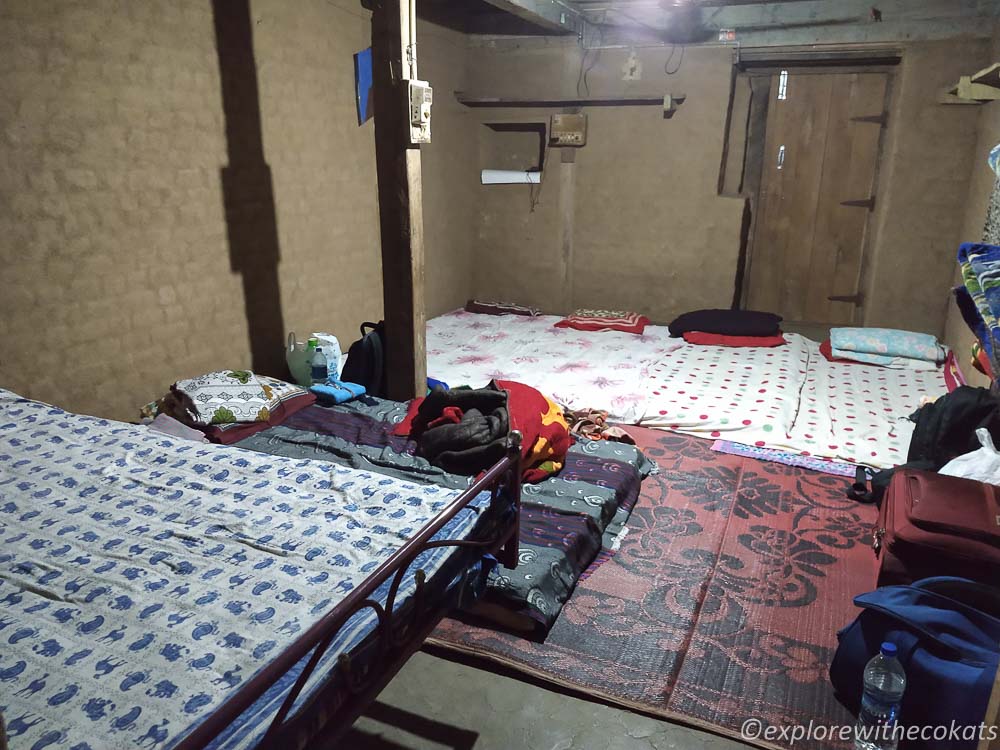
Baradpani – A rural celebration
I started the guided tour in and around Baradpani. Nestled amidst the Sahayadri mountains, the village is a nature’s paradise with water streams running and organic farms all around. We trekked to reach the farms and came across these beautiful sights.
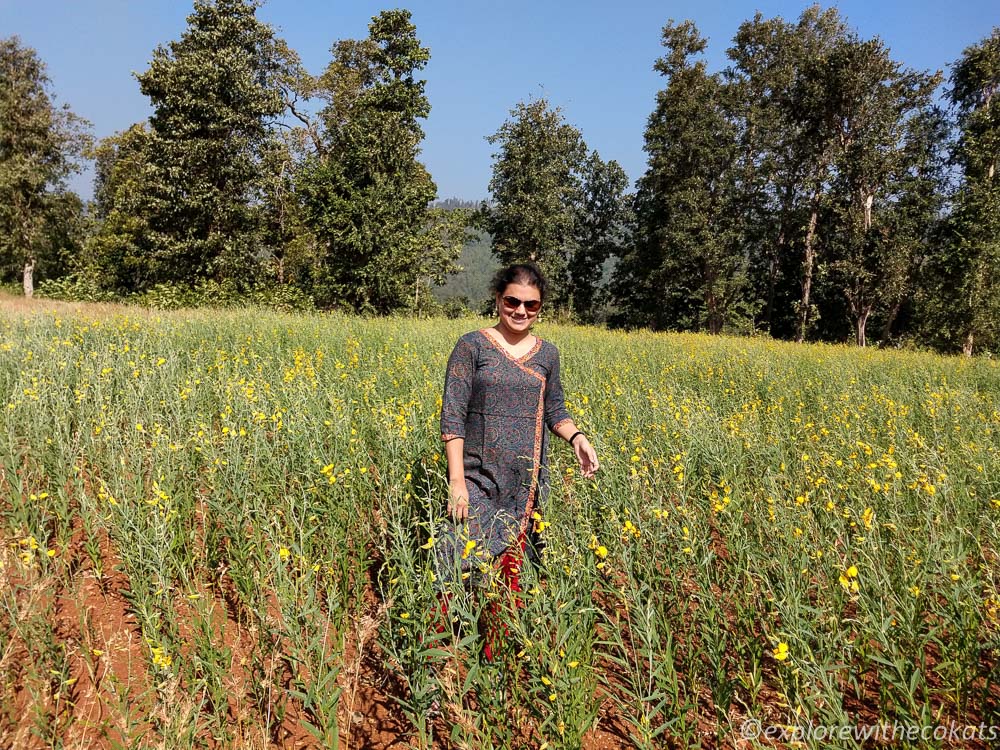
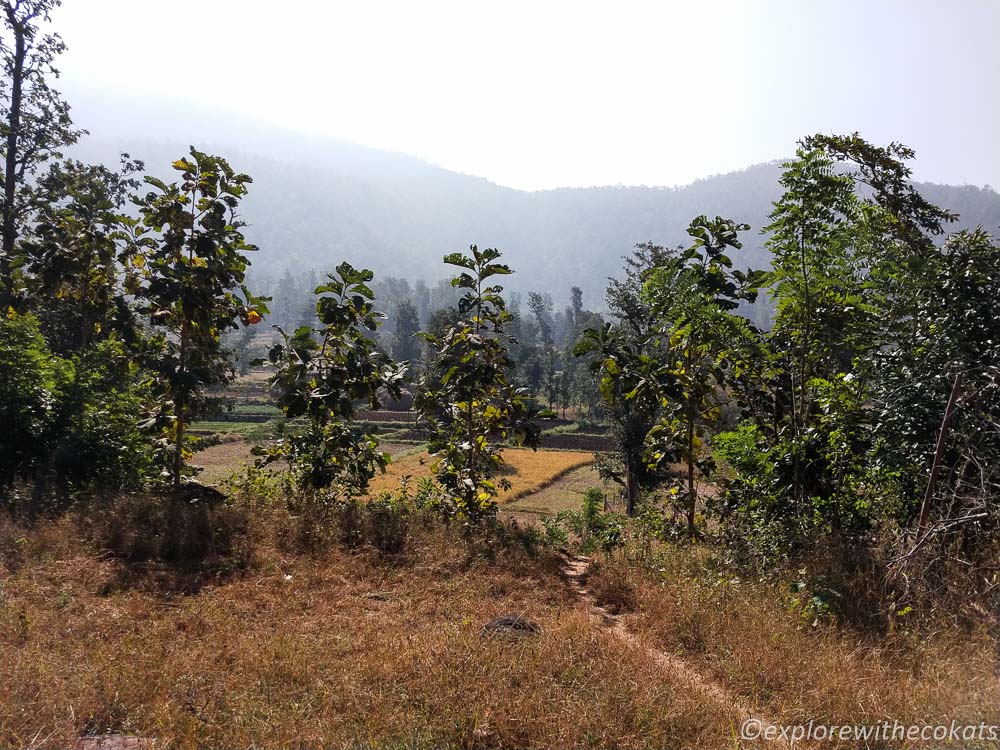
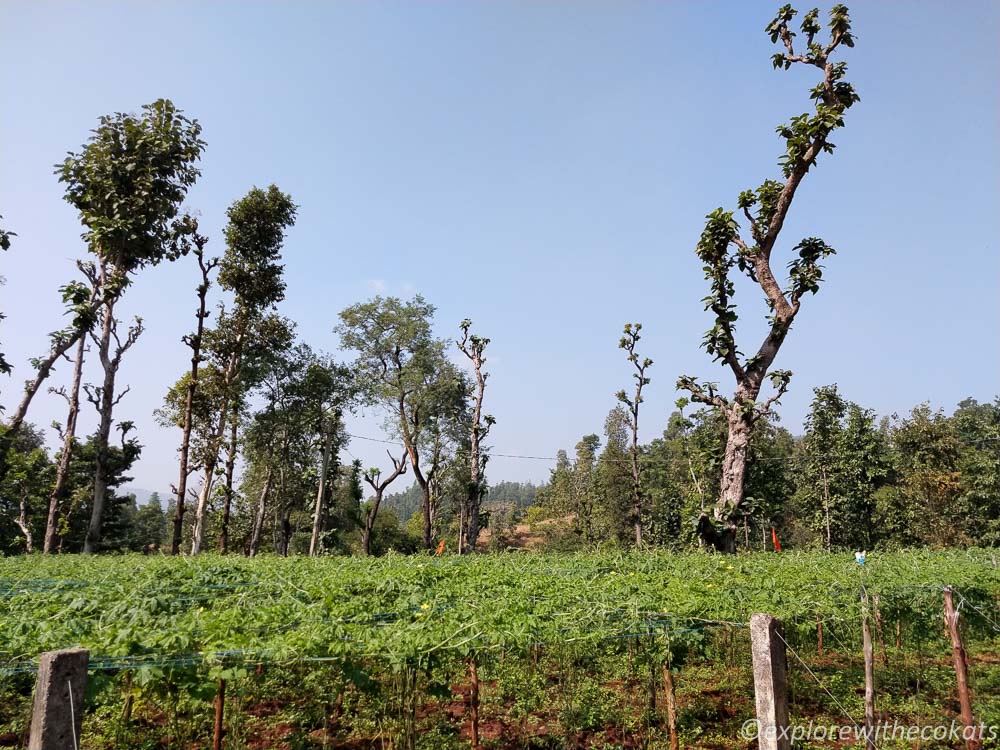
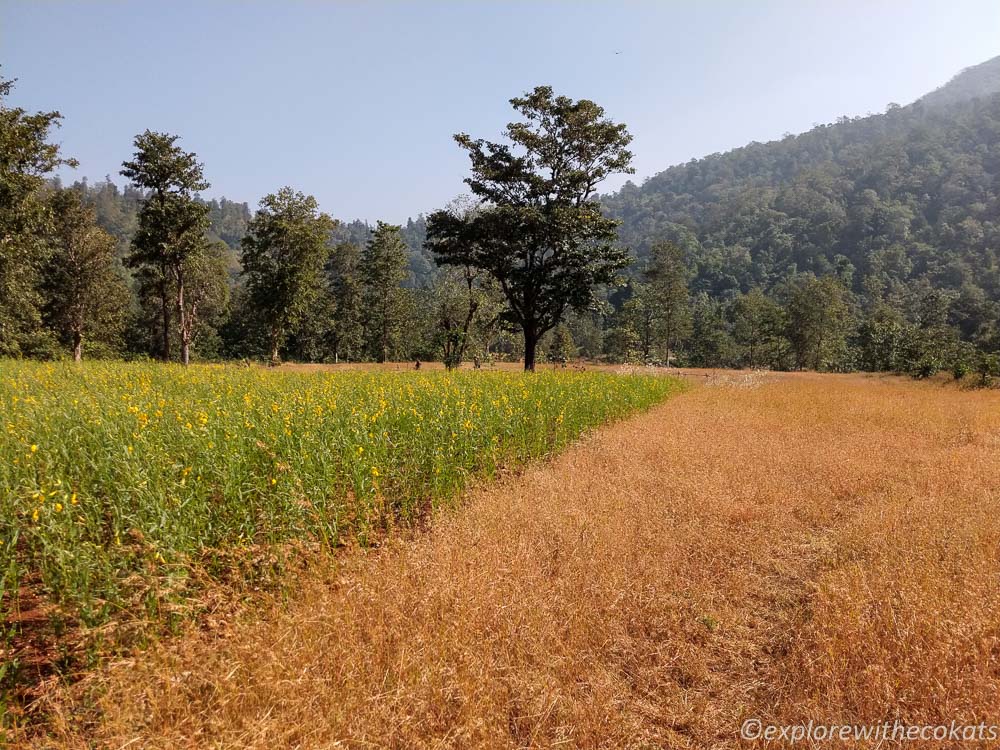

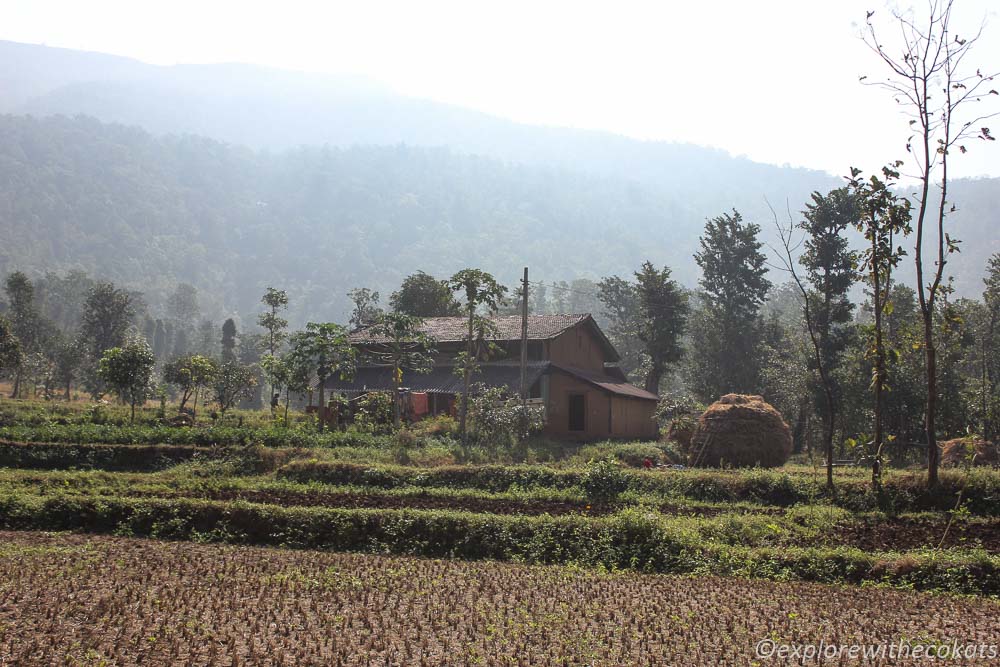
An organic Extravaganza
My guide Keshav informed me about the crops grown in the area and the fact that most of the farming was organic in nature, thanks to the fertile soil of the hills and being blessed with abundant rains. He also informed me that the crops grown here are primarily used by the owners i.e. the villagers of Baradpani and surrounding villages and only the remaining ones are sold. I was so intrigued to know that the villagers eat what they grow and also serve the same to the guests.
Over a period of 2 days, I was served food that was grown in Bhaskarbhai’s farm, harvested, processed, and ground into powder or used as a whole before cooking and serving me. The food included fresh vegetables – fenugreek leaves, coriander, potatoes, white peas, ladyfinger, chilies, etc. Rice was from his farm. The curry or lentil dal was also from nearby farms. The flatbread was made from Rice or Ragi (finger millet).
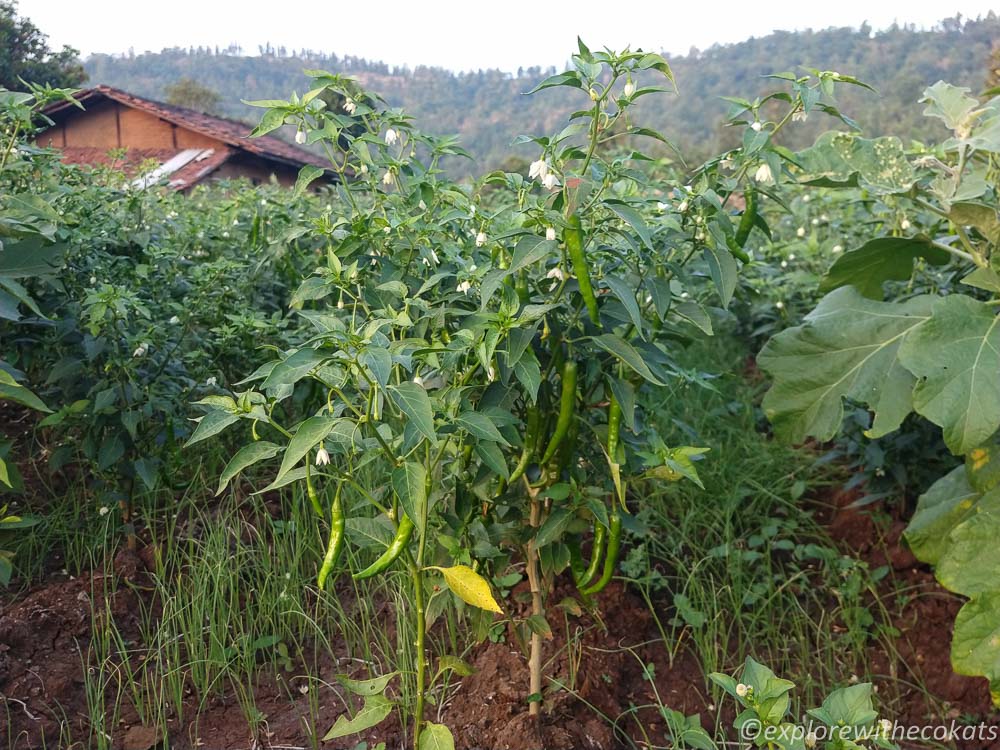
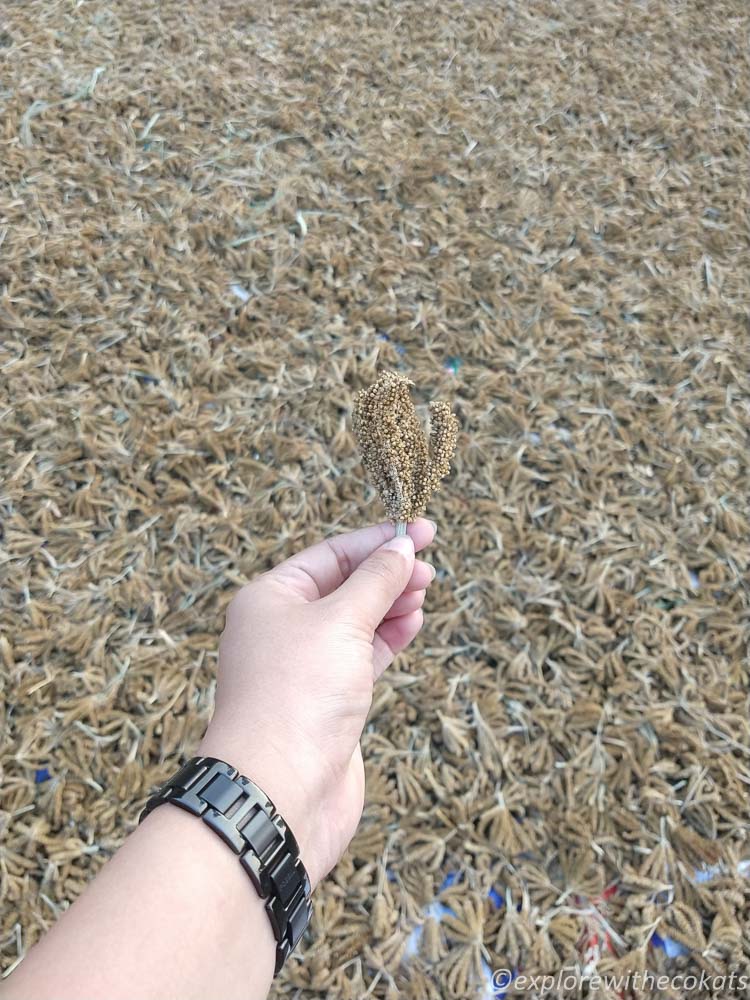
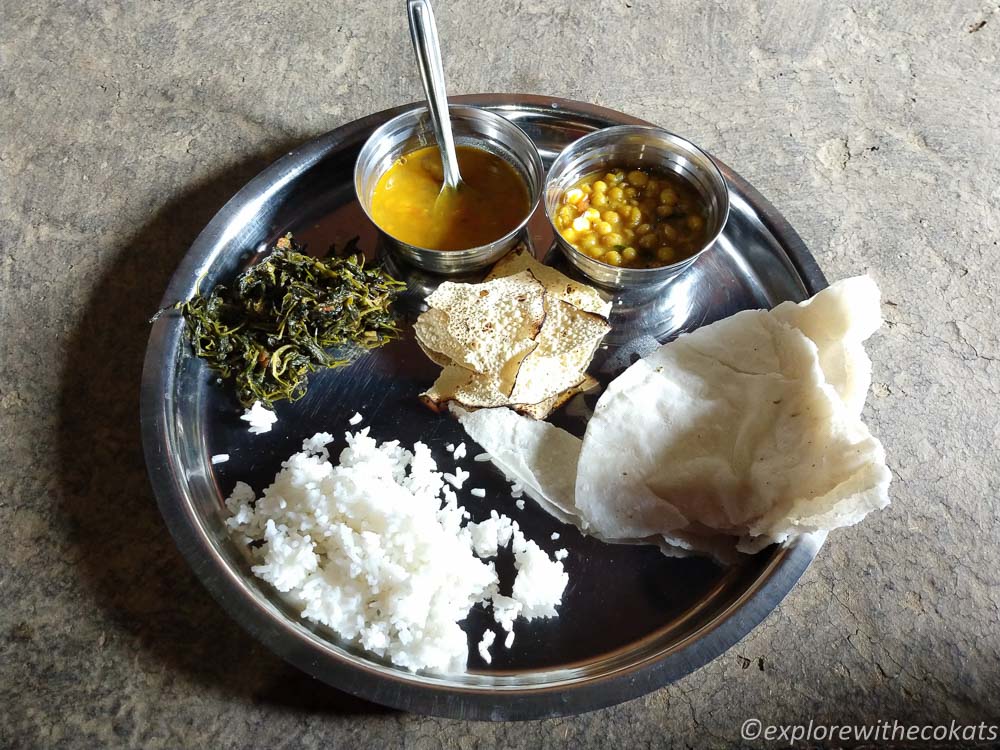
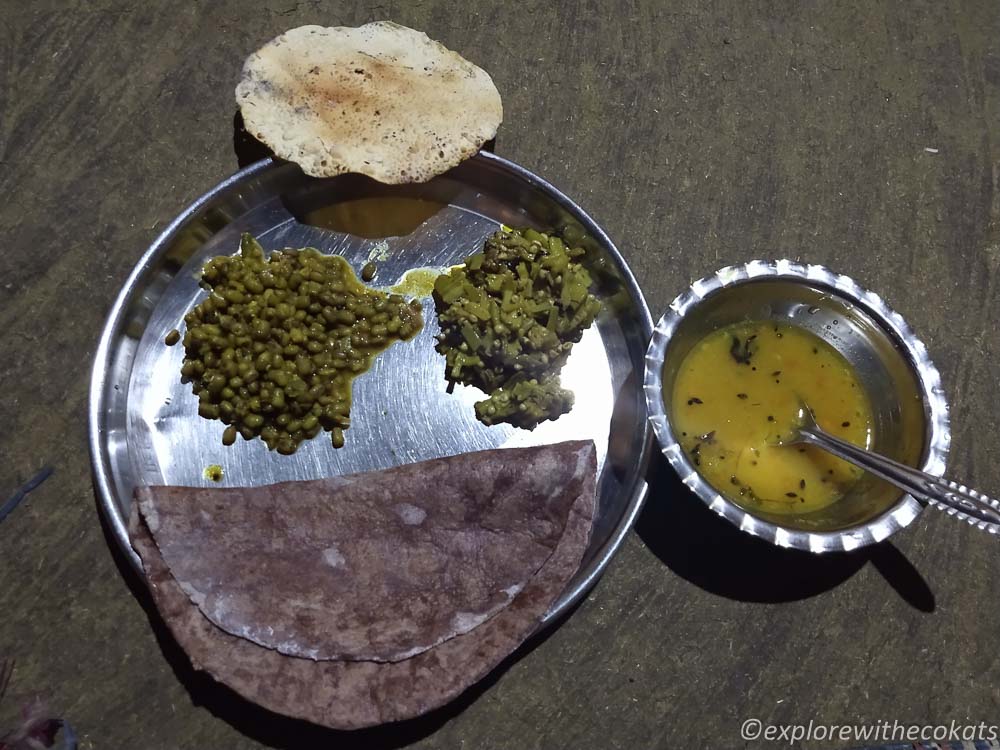
A Rice haven
I was shown how they process the rice. Right from manually planting the crops to harvesting them, cleaning them, exfoliating them, and grinding them. I sowed paddy while in Nakhon Phanom so I tried my hand on harvesting it here and I was tired within a few minutes! Hats off to the ladies who did it with so much flare and like a pro.

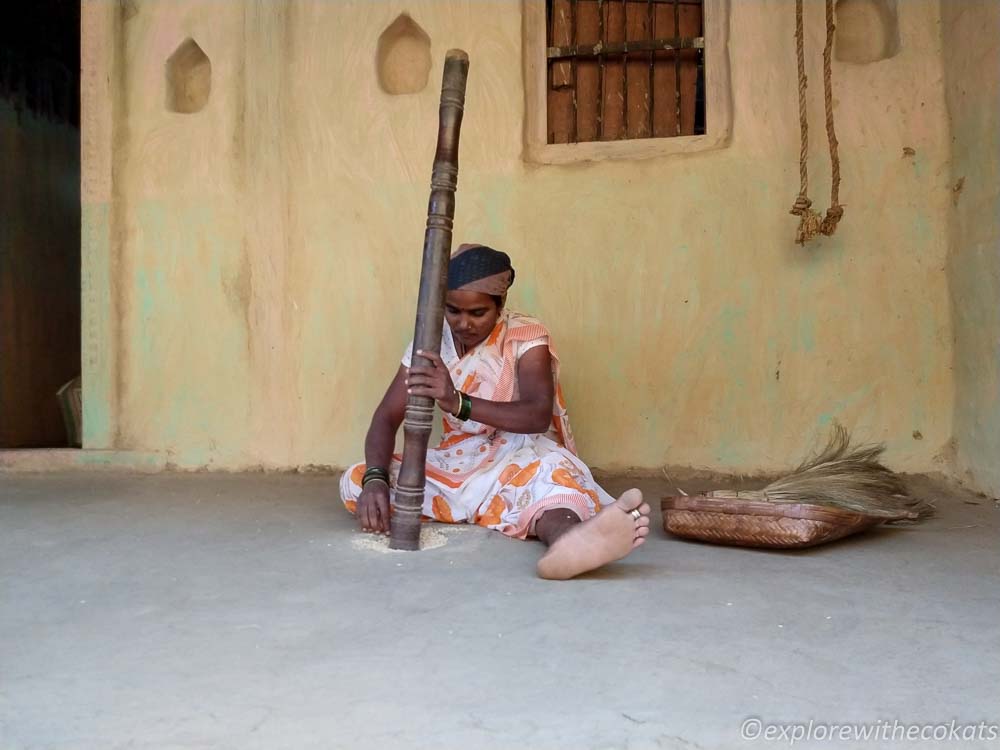
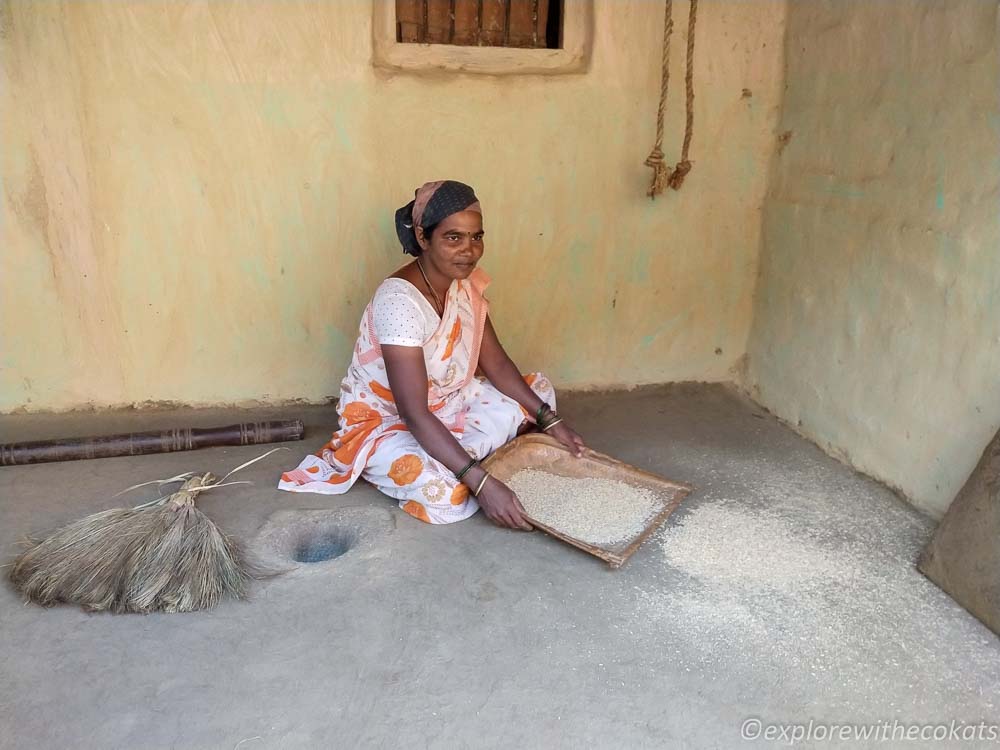
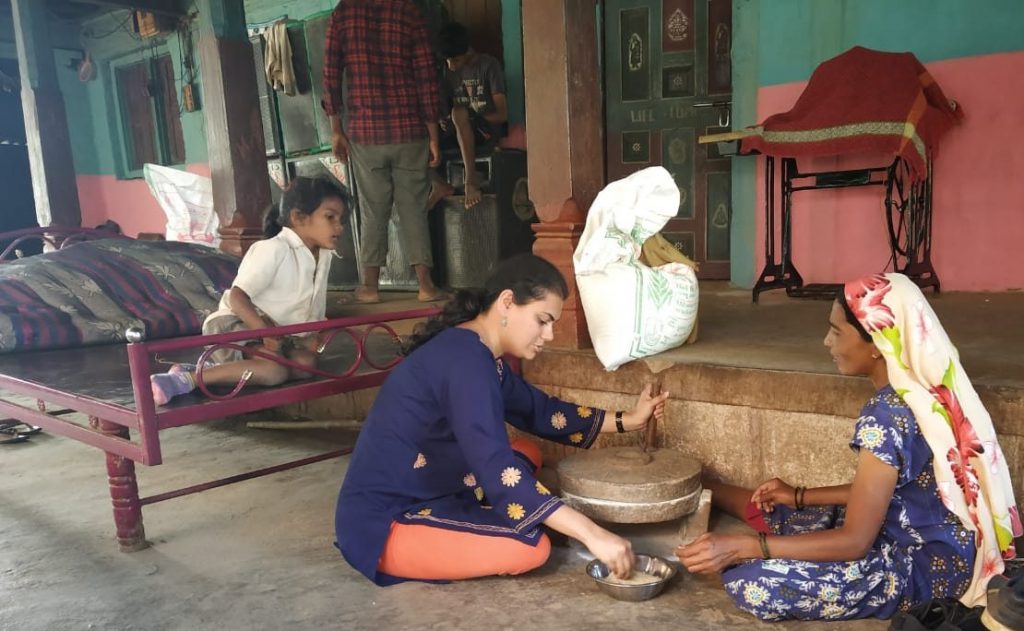
Small scale business for women employment
The weather in Baradpani is perfect for the growth of Lemongrass. It is a flavorful herb and its leaves are used in making tea. The herbs are a feature in everyone’s home and basically, every household uses them. The same herb is now helping the village women turn into entrepreneurs. A few of them have grabbed onto the opportunity and started making and selling lemongrass tea packs.
Lemongrass is harvested from the shrubs and washed. It is then dried on a clean tarpaulin till it is crisp. The dried leaves are then ground in a machine to form a fine powder. If you like its fragrance, trust me you are in lemongrass heaven by this time! The powder is then packed in small pouches for dipping in hot water/tea to give the most amazing flavor to your beverage. The packets are sold in the nearby town of Saputara where the tourists buy this. Thankfully the word is spreading and business opportunities are expanding to take this tea to other major cities of Gujarat.
Also Read: Responsible Tourism in Kumarakom
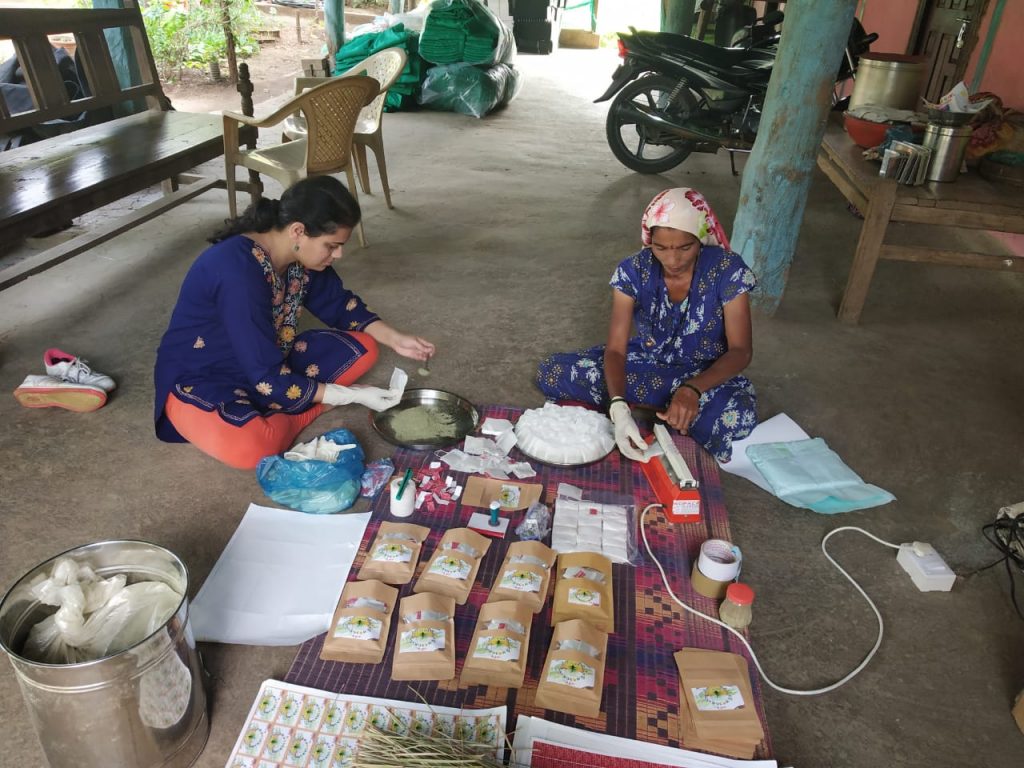
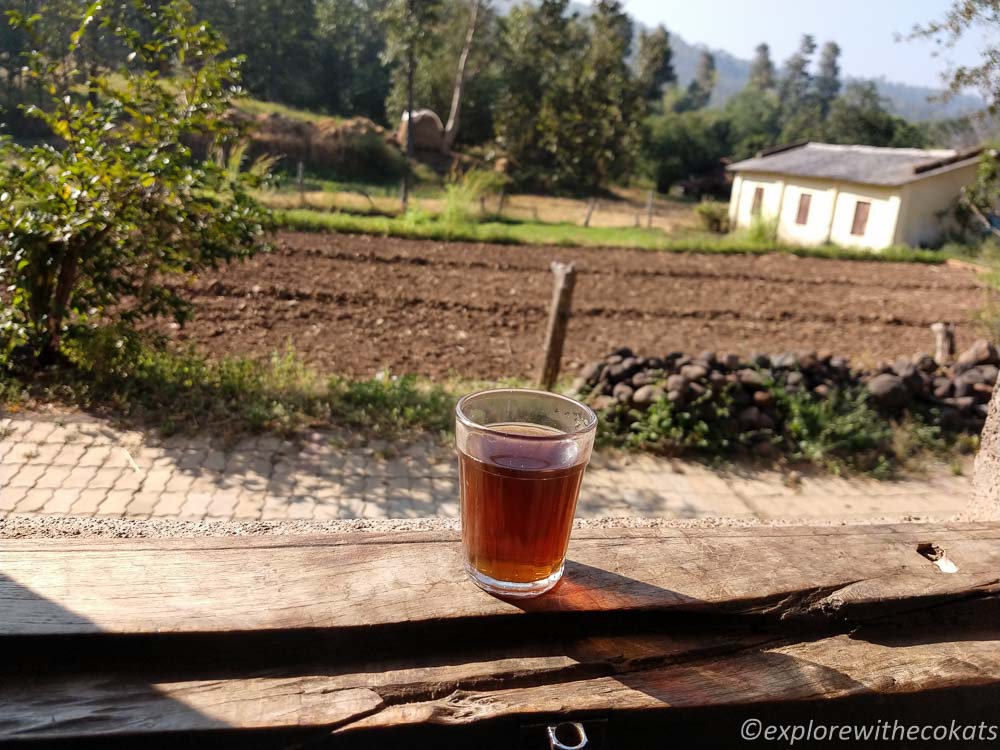
A Nature’s bounty
Blessed to be amidst the mountain ranges, Baradpani enjoys its position of being one with nature. There are plenty of waterfalls and water streams especially in monsoon, and I wanted to take my chances and check it out. My guide suggested me the nearest waterfall which only the locals knew and I was overjoyed to trek to it. Known as the Haraoundi waterfall, it is about 8kms from Baradpani village. A road took me near it and i had to trek for about a kilometer among the farms to reach it. There were no other tourists and it was absolutely breathtaking. Unfortunately climbing down the main waterfall was risky and I did not dare it. However it is possible to do it during summers.
Read about Sivasamudram waterfalls.
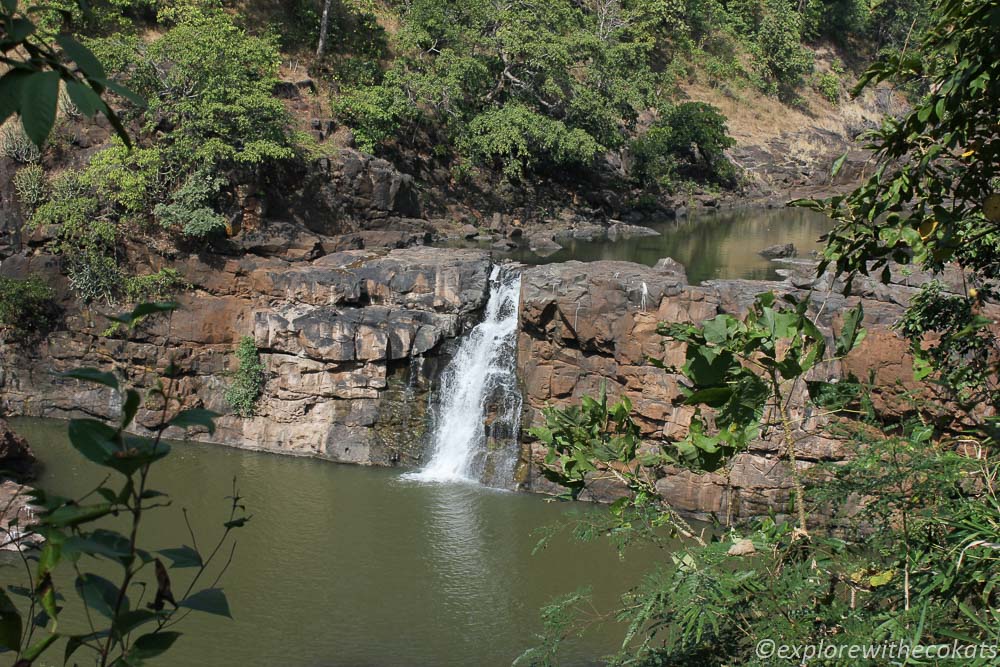
Final thoughts for Baradpani
Traveling to Baradpani with Grassroutes Journeys which is a community based responsible travel organization was an endearing and elevating experience. This is not the typical tourist place and you may not get a regular holiday-making experience with luxurious amenities but it will certainly help you connect with your rural roots. You may also learn the secret to living a ‘minimalistic’ lifestyle drawing inspiration from the villagers. Traveling to Baradpani is a sustainable and responsible travel experience that truly reconnects our soul with nature.
Inspired to soak in the peace of Baradpani? Write to them at [email protected] to book a tour.
Sustainable tips for Baradpani and community-based tourism in Gujarat
- Baradpani is a small village in the hills and has no solid waste management system. Do not dispose any plastic waste and add to the burden of managing waste in hills. Keep a small bag to collect all plastic waste and take it back to the city.
- Consume local. Avoid packaged foods while you are in the village and enjoy the home cooked delicious food.
- Use water judiciously. Drinking water needs to be fetched from a far off place and utility water needs to be pumped from hand pump. Use only as much as you need. Respect the host’s efforts.
- Buy a pack of tea or Ragi biscuits. You are helping in generating livelihoods for the local community.
- Wear decent clothes. Avoid wearing short or tight clothes as a mark of respect towards the elderly of the village.
- Be respectful. Thank the host after every meal or after a good night’s sleep. After all you are living in their house.
Disclosure – I was a guest at Baradpani Bhaskarbhai’s home. However, all opinions in this post are unbiased and of my own.
Disclaimer – This post contains affiliate links. It means it adds no extra cost to you if you book through the link but I get a referral bonus which helps me earn a little to keep this website up and running.
Pin this post!
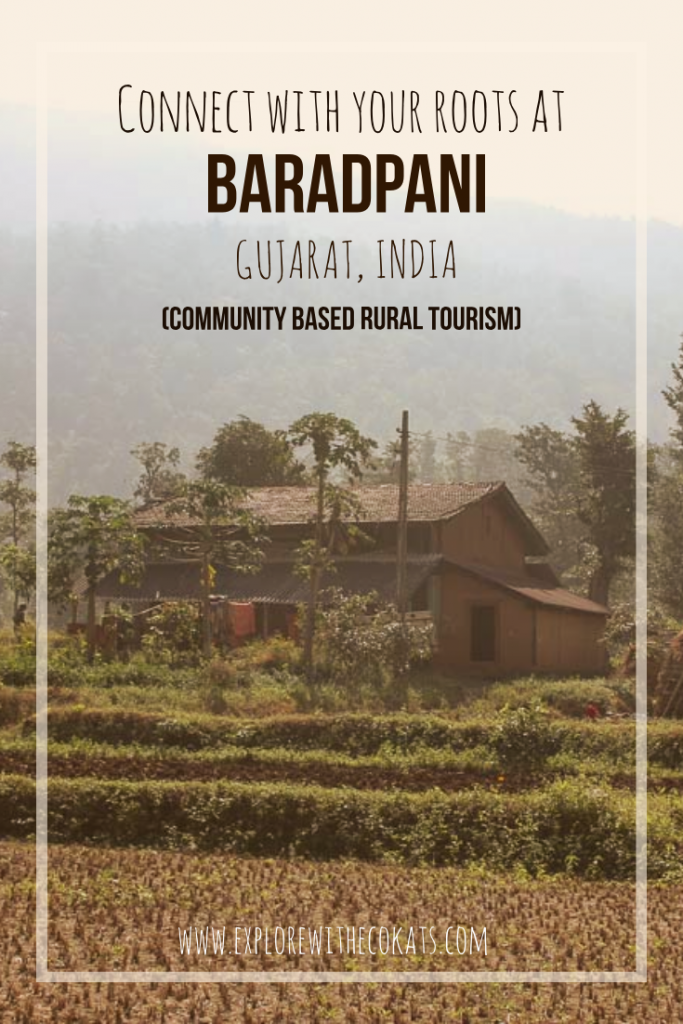
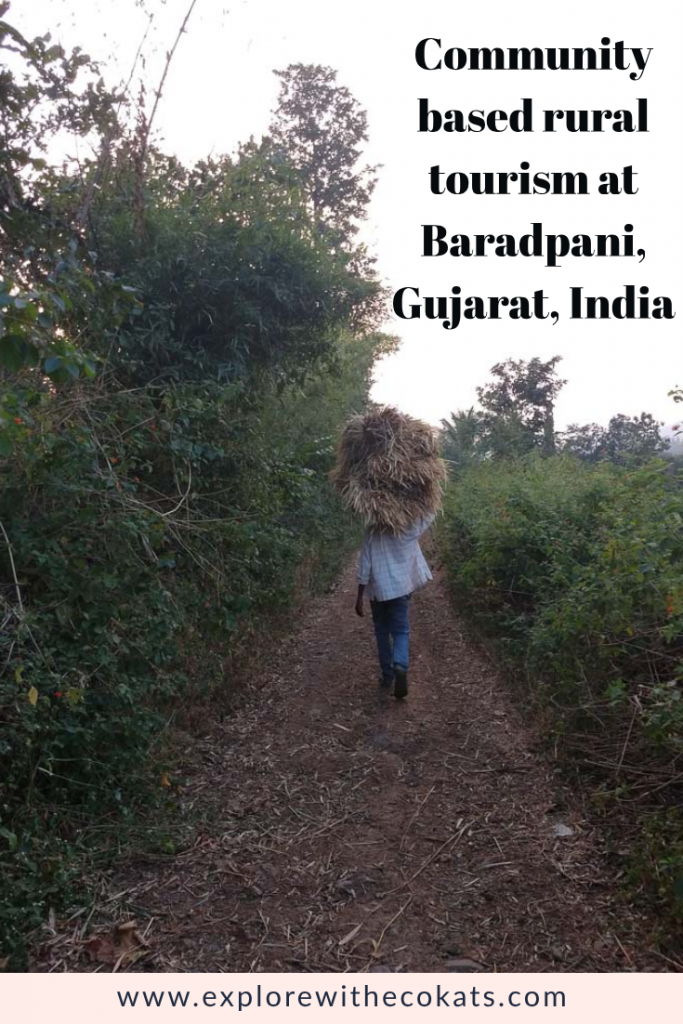

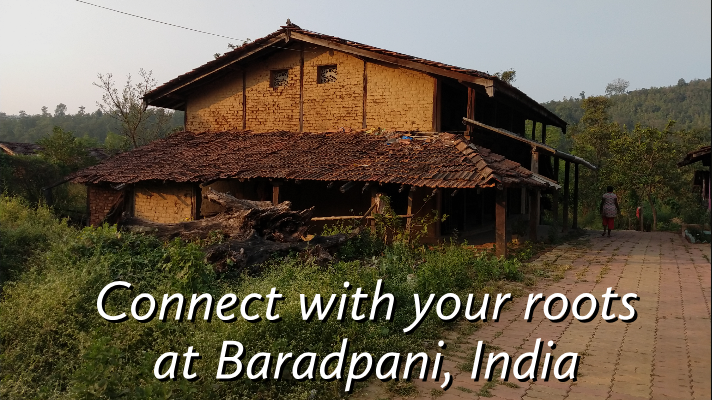
20 comments
Wow! Sounds like and incredible adventure. The food looks and sounds amazing — and so fresh!!! Thanks for sharing 🙂
I had an amazing time indeed 🙂
This was a very interesting post. It’s interesting to read about how other cultures live, and you painted a very good picture for me, and your images were beautiful.
Thank you for going through the lives of countryside community 🙂
Since i don’t have a lot of time to travel right now, i love the idea that i could travel through other’s eyes. great post, thanks!
This sounds amazing and like such a great experience! I love community-based tourism projects but so far, I have only experienced them in Thailand. However, I always love to get in touch with people who introduce you to their way of life, there’s always so much to learn and actually I think that’s the best part of traveling when you really get an insight into the life of locals!
Absolutely. It really made me connect to my roots. The city life makes one forget the peace a countryside gives.
I love the smell of lemongrass! I mostly use it as an essential oil, and haven’t yet tried it as a tea. But I’m going to see if I can find some around here and give it a try!
This was a new site for me! AND I LOVE IT! Will make sure to read more of your stuff 🙂
I am always a bigger fan of nature than cities. This sounds like an incredible way to get to experience India and a win for the hosts as well. Thanks for sharing this possibility.
I agree this is not a typical tourist destination, but it sounds like an amazing experience. I”ve only had lemongrass soup, so I’d love to try the lemongrass tea. The homemade organic food looks delicious and it was interesting to learn that the bathroom is not supposed to be inside the house.
What an amazing adventure you had! I love places where you can, in a small way, reconnect with a simpler way of living. Your sustainability tips are wonderful too … thank you for that.
A home stay is the perfect way to really learn about the culture. Great tips on buying and consuming local. How amazing that you were able to learn about growing rice and enjoy such a serene atmosphere.
Wow, it sounds like you had a great experience and learned a lot during your visit! That is awesome that they are combining organic farming with tourism and homestays, and the food looks delicious! I love your tips for sustainable travel as well. Thanks for sharing, Ketki!
This sounds like a wonderful adventure. I love when you can see all of the crops organically grown, and then get to eat meals made straight from the farm. So lovely!
I had a an amazing time too 🙂
Sound like a great place to visit, and your rules about what to take with you, try local food etc are universal for any trip
Unfortunately Ania, the typical tourists do not know about these basic rules. Us, frequent travelers do know.
I loved how you went to Baradpani to experience a typical Indian village in the countryside, and interacted with the villagers, leart about their organic journey. I once went to Tulsishyam in Gujarat nearby Gir forest to experience the same.
I have not heard about Tulsishyam but I went to Bhojade village near Girlast week and just writing my blog about it!